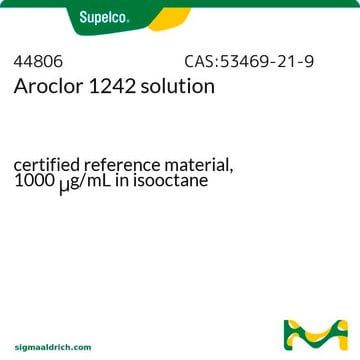850144P
Avanti
18:0-20:4 PI
Avanti Research™ - A Croda Brand
Synonim(y):
1-octadecanoyl-2-(5Z,8Z,11Z,14Z-eicosatetraenoyl)-sn-glycero-3-phospho-(1′-myo-inositol) (ammonium salt); SAPI; PI(18:0/20:4(5Z,8Z,11Z,14Z)); 110661
About This Item
Polecane produkty
opis
1-stearoyl-2-arachidonoyl-sn-glycero-3-phosphoinositol (ammonium salt)
Próba
>99% (TLC)
Postać
powder
opakowanie
pkg of 1 × 100 μg (with stopper and crimp cap (850144P-100ug))
pkg of 1 × 500 μg (with stopper and crimp cap (850144P-500ug))
producent / nazwa handlowa
Avanti Research™ - A Croda Brand
typ lipidu
cardiolipins
phospholipids
Warunki transportu
dry ice
temp. przechowywania
−20°C
ciąg SMILES
O[C@H]1[C@@H]([C@H](O)[C@H](O)[C@@H](O)[C@@H]1O)OP(OC[C@H](OC([C19H31])=O)COC(CCCCCCCCCCCCCCCCC)=O)([O-])=O.[NH4+]
Opis ogólny
Zastosowanie
- as a negative control to evaluate the specificity of the interaction between cholesterol sulfate and receptor Mincle by surface plasmon resonance (SPR) experiment
- as a test lipid in liposomes harboring candidate triggering receptor expressed on myeloid cells 2 (TREM2) ligands, to assess TREM2 stimulation
- as a reference in liquid chromatography tandem mass spectrometry (LC-MS/MS) analysis to identify PI(18:0/20:4) in cancer tissue-originated spheroids (CTOSs) extraction
Opakowanie
Informacje prawne
najczęściej kupowane z tym produktem
Kod klasy składowania
11 - Combustible Solids
Certyfikaty analizy (CoA)
Poszukaj Certyfikaty analizy (CoA), wpisując numer partii/serii produktów. Numery serii i partii można znaleźć na etykiecie produktu po słowach „seria” lub „partia”.
Masz już ten produkt?
Dokumenty związane z niedawno zakupionymi produktami zostały zamieszczone w Bibliotece dokumentów.
Klienci oglądali również te produkty
Nasz zespół naukowców ma doświadczenie we wszystkich obszarach badań, w tym w naukach przyrodniczych, materiałoznawstwie, syntezie chemicznej, chromatografii, analityce i wielu innych dziedzinach.
Skontaktuj się z zespołem ds. pomocy technicznej












